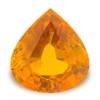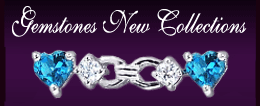Glittering Stones » Gemstone Reports » American Gemological Laboratory Report(AGL)
American Gemological Lab Report
American Gemological Laboratories Innovation and Expertise
 Founded in 1977, and located in the heart of New York’s gem and jewelry district, American Gemological Laboratories (AGL) is an international gemstone testing facility specializing in comprehensive colored gemstone analysis. AGL provides identification reports, detailed enhancement reports, country-of-origin or provenance reports, as well as complete colored stone analysis documents tailored to gems of unique importance.
Founded in 1977, and located in the heart of New York’s gem and jewelry district, American Gemological Laboratories (AGL) is an international gemstone testing facility specializing in comprehensive colored gemstone analysis. AGL provides identification reports, detailed enhancement reports, country-of-origin or provenance reports, as well as complete colored stone analysis documents tailored to gems of unique importance.
AGL’s main focus is primarily to function is as a buyer’s lab, offering comprehensive colored stone examination reports that can include country of origin analysis, enhancement detection and reporting, with full quality reports for important colored stones. C. R. Beesley is the president and main gemologist, internationally recognized for his expertise in colored stone research and analysis, and considered by most gemologists to be the leader in colored gemstone analysis. Many of our top gem quality gemstones are accompanied by a gem identification report from American Gemological Laboratory (AGL).
AGL was a pioneer in the colored gemstone industry as the first gemological laboratory in the USA to issue country-of-origin reports.Additionally, it was the first in the world to quantify colored stone quality in a clear and comparative manner.In addition to its position of leadership in gemstone documentation,AGL has extensive experience in consumer protection programs.
AGL PRESTIGE REPORT AND RATING SCALE:
 The AGL Prestige Report is the jewelry industry’s most comprehensive colored gemstone report.The AGL Prestige Report comes in three different versions based on the level of information you desire:
The AGL Prestige Report is the jewelry industry’s most comprehensive colored gemstone report.The AGL Prestige Report comes in three different versions based on the level of information you desire:
AGL Prestige Standard ID and Enhancement Report. AGL Prestige Origin Report, including ID and Enhancement. AGL Prestige Grading Report, including Origin, ID and Enhancement
AGL Color Rating Scale:
Since there are so many optical/physical principles involved in the reflection and re-reflection of light through a gemstone, any particular gem can exhibit a wide range of colors.The color grade is based upon the purity of primary color.For example, the greener the emerald, the redder the ruby, or the bluer the sapphire, the lower the numerical grade on an AGL scale. For example, a sapphire may receive a 3.5 on the color rating scale if it has 70% blue as its primary color. The less primary color, the higher the numerical color grade. For example, a 65% primary color would probably be graded a 4.5 color.
1-2 |
3-4 |
5-6 |
7-8 |
9-10 |
Excellent |
Very Good |
Good |
Fair |
Poor |
In establishing a base for international quality reference standards, AGL had to be sure that all gemstones from the best to the worst could be accommodated by the system.Therefore, the top of the scale has become almost a theoretical standard of excellence. Please do not ask for 1.00 to 2.00 color grades. Because of the AGL's stringent grading practices, a 3.5 color is usually the best color grade any gem will receive. A 3.5 colored gemstone on an AGL Grading Report is nearly synonymous with a D-color diamond on a GIA Diamond Grading Report. On rare occasion, AGL may find exceptional examples that will receive even better color grades.
AGL Tone Scale:
Tone describes the lightness or darkness of a gemstone. Color considered alone, without taking into account tone, will lead to errors in interpretation.If a gemstone is too light in tone, the color will not be rich enough. Conversely, if a gemstone is too dark, it will sacrifice brilliancy.
0 - 5 - 15 - 20 |
25 - 30 - 35 |
40 - 45 - 50 |
55 - 60 - 65 |
70 - 75 - 80 - 85 |
90 - 95 - 100 |
Very Light |
Light |
Light-Medium |
Medium |
Medium-Dark |
Dark-Very Dark |
AGL Clarity Scale:
Clarity is defined as the degree to which the gemstone is free of inclusions. A good rule of thumb to remember is: You will probably not see inclusions in a Lightly Included (LI) gem, you may see some inclusions in a Moderately Included (MI) gem, and you will probably see inclusions in a Heavily Included (HI) gem with the naked eye. Excessively Included (E) gems have durability problems and should be avoided.
| FI | LI1 - LI2 |
MI1 - MI2 |
HI1 - HI2 |
E1 - E2 - E3 |
Free of inclusions |
Lightly included |
Moderately included |
Heavily included |
Excessively included |
AGL Cutting/Finish Scale:
The cutting of a gemstone numerically describes the overall appearance of a gem.The finish grade refers to the polish quality of a gem.These are very difficult numbers to obtain for a colored gemstone.Unlike diamonds which are cut according to strict mathematical parameters, most colored gemstones are cut for weight retention.
1 |
2 to 3 |
4 to 6 |
7 to 8 |
9 to 10 |
Excellent |
Very Good |
Good |
Fair |
Poor |
Total Quality Integration Rating
This comment integrates the total visual impact of the gem into a verbal description and may or may not have an effect on the price of the gem. In the sample it is Excellent. Look at the Color Rating (AGL). Excellent translates into 1.5. The TQIR can increase or decrease the final grade only 1/2 of a grade.Therefore, in this sample, a TQIR of 1.5 raises the 3.5 color grade to a 3. If the TQIR is lower than the color grade, it means the stone may have a problem, and the TQIR can actually lower the final grade of the stone 1/2 grade.
Ideal Parameters
Carat Weight |
1 carat or larger |
Color |
Good (6) or better |
Tone |
Ideal tone for ruby, sapphire and emerald ranges from medium to gem (65-85). Ideal tone for other green types varies from light and medium (20-65). |
Clarity |
Moderately included Two (MI2) or better |
Average Brilliance |
50% or more |
Cutting/Finish |
Good (6) or better |
NOVEMBER BIRTHSTONE - CITRINE

COMMEMORATIVE EVENT - 13th Anniversary
KEYWORDS - Success, Abundance, Personal Power
ALSO KNOWN AS - Merchant's stone, Success stone
COLORS - Pale yellow to brown
OCCURRENCE - Brazil
COLOR ZONING - Tiger stripes or Zebra stripes


